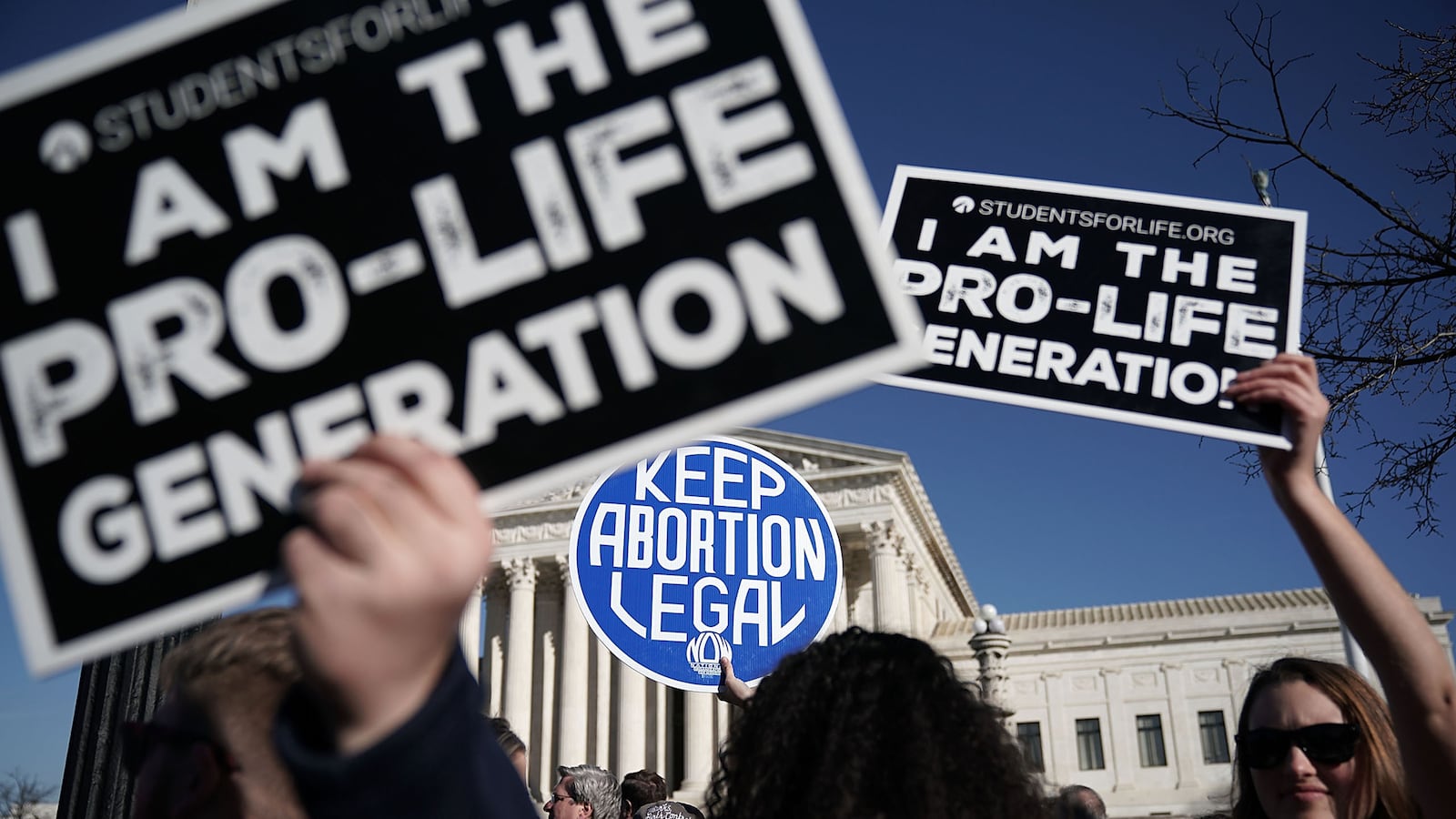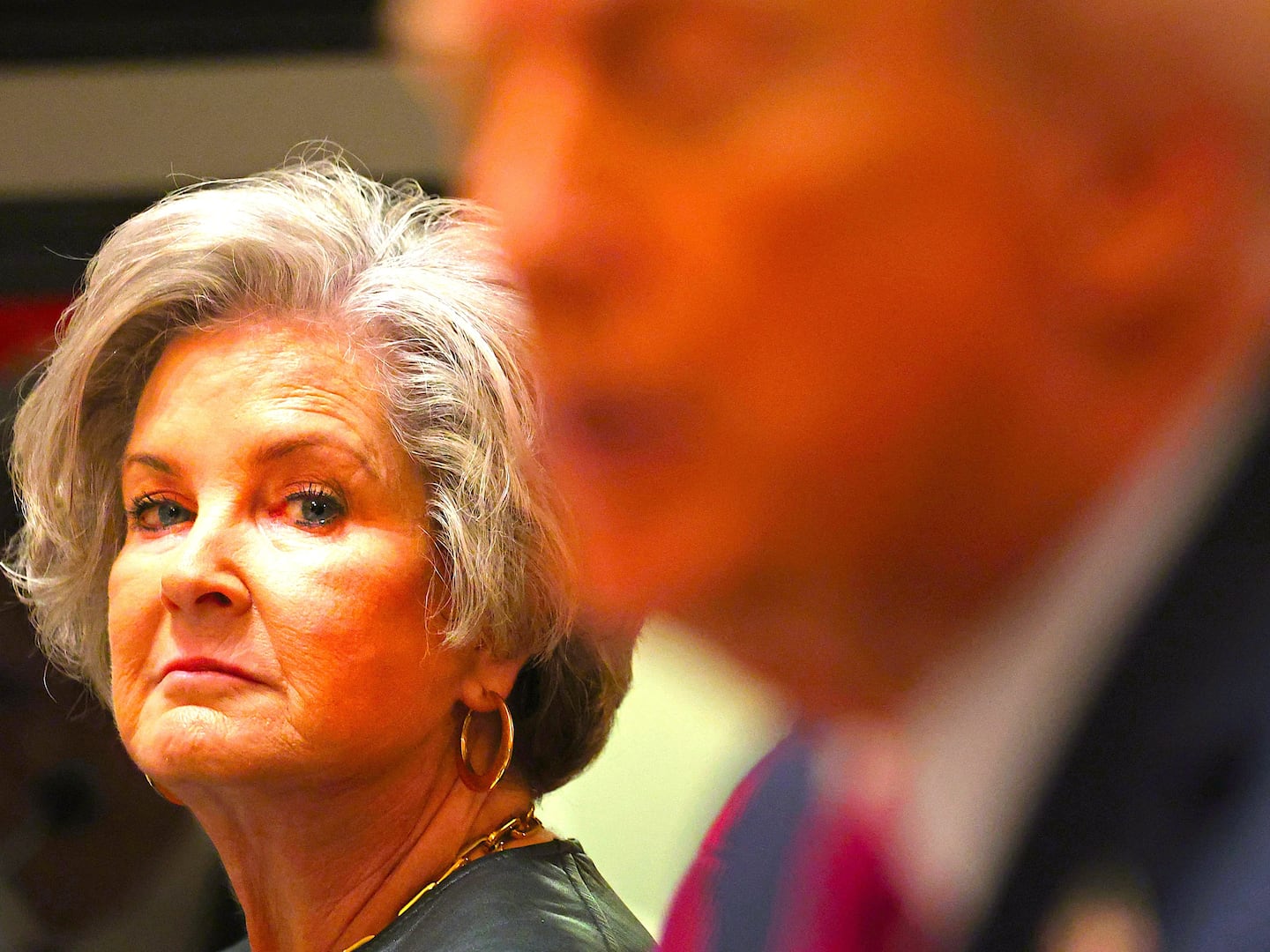The post-Trump world hasn’t proven to be the dark slog many tearfully feared it would be on election night 2016. Since the against-the-odds election, certain tranches of America have been galvanized. Women are running for office in record numbers. The Women’s Marches of both 2017 and 2018 were inspiring displays of female solidarity. Creatives have responded to Trump’s election by amplifying the voices of the disempowered. And there’s no way the Ivanka Trump-esque brand of superficial feel-good empowerment (available for purchase!) can survive this historical moment.
These are all good things. But while women deserve to celebrate their victories in some areas, other areas should cause pro-choice women and people who support abortion access in America grave concern.
On Monday night, Senate Republicans failed to secure the 60-vote filibuster-proof majority necessary to advance a federal 20-week ban on abortion. For proponents of abortion rights, this might feel like a victory. But the truth is that, for many American women, abortion access still sits on a precipice.
The measure failed by a 51-46 vote. All Republicans except Susan Collins of Maine and Lisa Murkowski of Alaska voted in favor of it; all Democrats except Joes Donnelley and Manchin (of Indiana and West Virginia, respectively) and Bob Casey of Pennsylvania voted against it. The House passed the bill back in October, and President Trump—who became an ardent pro-lifer around the time a tabloid published an on-the-record interview with a porn star who claimed that she’d had unprotected sex with Trump in 2006—had promised to sign it if it advanced past the Senate.
A federal ban on abortion after 20 weeks’ gestation would have been a prize for abortion opponents. But it wouldn’t be the prize. The real battle for abortion rights is taking place in state houses, too scattered to garner anything more than fleeting national attention—but this is the testing ground for pro-life laws that could one day impact millions of women.
Judicial precedent establishes that the state cannot impose an “undue burden” on abortion access. It also establishes that the state cannot constitutionally bar abortion before the point of fetal viability, or when the fetus can survive outside of its mother’s body. When Roe v. Wade passed, that was around 23.5 weeks. But a lot has changed since then. Scientific advancements have pushed “viability” down toward the 20-week mark now cited in bans across the country. Anti-abortion groups often cite the story of Amilia Taylor, who was born at only 21 weeks and six days’ gestation and survived as an example of the “viability” line’s arbitrariness.
But even judicial precedent can’t protect reproductive rights. The rightward shift of statehouses has been dramatic. In 2010, Republicans controlled only 14 state governments. After the 2016 election, they controlled 32. That means that Republicans are a handful of states away from controlling enough states to call a constitutional convention, if they wanted to, and ratify an amendment regulating or outright banning abortion.
A constitutional amendment, like a legislatively-enacted federal ban, would be a moonshot for pro-lifers. That’s not what they’re counting on. Many conservative statehouses serve as an individual lab for anti-abortion legislation, a proving ground for laws designed to eke away at abortion access. Abortion restrictions are inevitably challenged in state and district courts, and most of them are struck down. But every once in awhile, one gets through to the Supreme Court. With 32 states controlled by Republicans, pro-lifers have a battery of legal testing grounds at their disposal. A state-level ban that’s held up in the Supreme Court would serve as a green light to other states controlled by the party with opposition to abortion in its platform.
The Trump administration has been utilizing non-judicial, non-legislative channels to achieve pro-life ends in a way that indicates that somebody who isn’t Donald Trump is pulling the levers. Thanks to the Trump administration, the Department of Health and Human Services is stacked with appointees who are hostile to abortion access (Some are on the record as being dubious that birth control even works). The administration has also issued guidelines that allow employers to decline to provide contraception coverage to female employees on “moral” grounds. Most recently, it moved to allow medical professionals to decline to participate in procedures that they find morally upsetting. In theory, that means a receptionist could refuse to check a trans patient in for hormone therapy. In practice, its reach is yet to be fully realized.
It doesn’t matter how many women march, how many sassy signs dot Instagram, how many first-timers run for office. When it comes to abortion access, women are behind the eight ball in a way they haven’t been in a generation.
Prior to Donald Trump’s victory in 2016, the likelihood of all these stars aligning seemed small. Now, with a suddenly-ardent-pro-life-president in office, a single Supreme Court vacancy stands between millions of women and abortion access.
On Sunday, The New York Times described the current state of abortion rights as a “gathering storm.” It’s been gathering for a long time. Those who consider themselves pro-choice should have been panicking about this yesterday.






